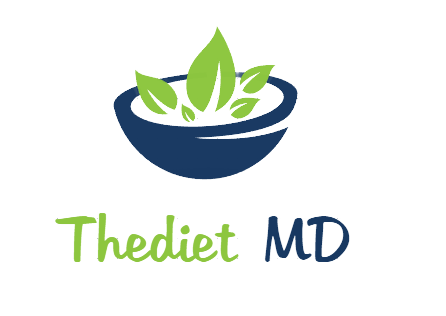The objective of this Attack Phase is that the body can gradually get used to the new diet and will have to cope with the absence of certain foods common in your daily diet.
In addition, it involves exercising to avoid the temptations that may appear to eat other foods until you reach the absence of hunger but in a gradual way.
In general, the first day of this Phase is the most difficult to overcome because it is a day of acceptance and combat, with the incentive that it is possible to eat without measuring the amounts of food allowed.
On the second and third days, they are essential for the body to adapt to dietary changes, and you may feel slightly fatigued. Therefore, a physical activity that requires a lot of energy is recommended.
Due to the type of menu in this Phase, a high satiating and water-repellent power is achieved since it is food with a high protein content to which is added the consumption of 1.5 litres of water per day. Fat volume is lost, a noticeable reduction in cellulite and the feeling of a bloated stomach.
Table of Contents
Duration of this Phase

The Attack Phase of the Dukan Diet can last from 3 to 10 days, depending on how much weight you want to lose, in addition to other factors such as your physical build, age and frequency of previous diets.
As a general guideline, it is recommended:
- One day to lose 5 kilos or less.
- Three days to lose up to 10 kilos of weight.
- Five days to lose between 10 and 20 kilos
Only when you want to lose more than 20 kilos can the Attack phase be lengthened up to 7 days, but Dr. Pierre recommends exceeding ten days in this first Phase.
Foods allowed in this Phase
The diet in the Attack Phase is based on the consumption of pure proteins of animal origin, soluble fibres, milk, yogurts and skimmed cheeses, and the condiments and dressings authorized for all phases; also, drink a litre and a half of water every day and walk 20 minutes a day as a mandatory exercise.
This First Phase establishes the foundations of the entire diet, and you must maintain them throughout it. The foods you can take are the following:
Pure proteins. Pure proteins are obtained from lean beef, beef, rabbit, horse, liver, kidney, beef tongue, rabbit, and poultry such as chicken, turkey, pigeon, guinea fowl, quail, ostrich, pheasant, partridge, and duck wild.
Turkey and chicken sausages are also allowed. Shellfish and mollusks such as mussels, clams, prawns, crabs, oysters, and scallops; fatty, white, smoked and dried fish. Oily fish can be eaten, especially sardines, mackerel, tuna and salmon; white fish such as hake, cod, sole, ray or whiting.
Likewise, chicken and quail eggs are allowed, but their consumption should be limited if there is a history of high cholesterol, deli meats and low-fat cold cuts, and plant proteins such as seitan and tofu. In all cases, they should not have added sugars or starches.
Water soluble fibre. This type of fibre has a “fat-burning” effect and is very satiating; it facilitates intestinal transit and helps to “regulate bad cholesterol.” It is found in oat, wheat bran, chia, agar, flax, and konjac.
Skimmed dairy. Milk, yogurts and cheeses, with a maximum per person per day of 1000 grams between skimmed milk, skimmed cottage cheese, skimmed Burgos cheese, natural skimmed yogurt or flavours.
The condiments and dressings are authorized for all phases. They add flavour and variety to menus while avoiding the boredom of always tasting the same thing. Among those that can be used throughout the diet are: fresh or dried herbs and spices such as pepper, curry and cloves.
It also includes oregano, basil, rosemary, thyme, paprika, chilli, turmeric, ginger, bay leaf, cinnamon, vanilla, cardamom, etc.
White wine or apple vinegar, mustard, 100% unsweetened ketchup, onion, natural tomato, and tomato sauce. Peppers, pickles, chives, garlic, and lemon can be added in moderate quantities and only as a condiment.
Xylitol, stevia, sucralose, saccharin and other sweeteners are sugar substitutes but do not take more than eight teaspoons daily.
Drink a litre and a half of water daily to maintain body hydration and promote the powerful diuretic effect of this first Phase.
It is also allowed to drink infusions and diet soft drinks such as Coca-Cola Zero and Nestea without sugar.
Attack Phase Menu
As it is a phase where only the consumption of protein without weight restriction is allowed and there is freedom in the design of the menu, here is an example for one day:
| Meal Time | Food/Drink |
|---|---|
| Breakfast | Coffee with skim milk, two slices of chicken, one slice of fresh skimmed cheese, one tablespoon of oat bran |
| Midmorning | 1 cup of unsweetened green tea, two pieces of York ham |
| Meal | 2 grilled chicken breasts, one boiled egg, plain yogurt |
| Afternoon Snack | Two pieces of turkey breast, plain yogurt |
| Dinner | 1 grilled salmon fillet with lemon juice and a little salt, one can of natural tuna, and surimi sticks |
Completed with the Attack Phase of the Dukan Diet, Phase 2 follows, which we will explain in the post: Cruise Phase.
My name is Ellie Lauderdale, MD and I am USA based professional Nutritionist .
I am a Registered Dietitian Nutritionist and board certified specialist in sports dietetics who is trained in integrative medicine. I have worked with hundreds of clients, from those suffering with chronic disease to professional and olympian athletes. My goal is to help optimize you from the inside so that you can feel, perform, and look your best on the outside.


